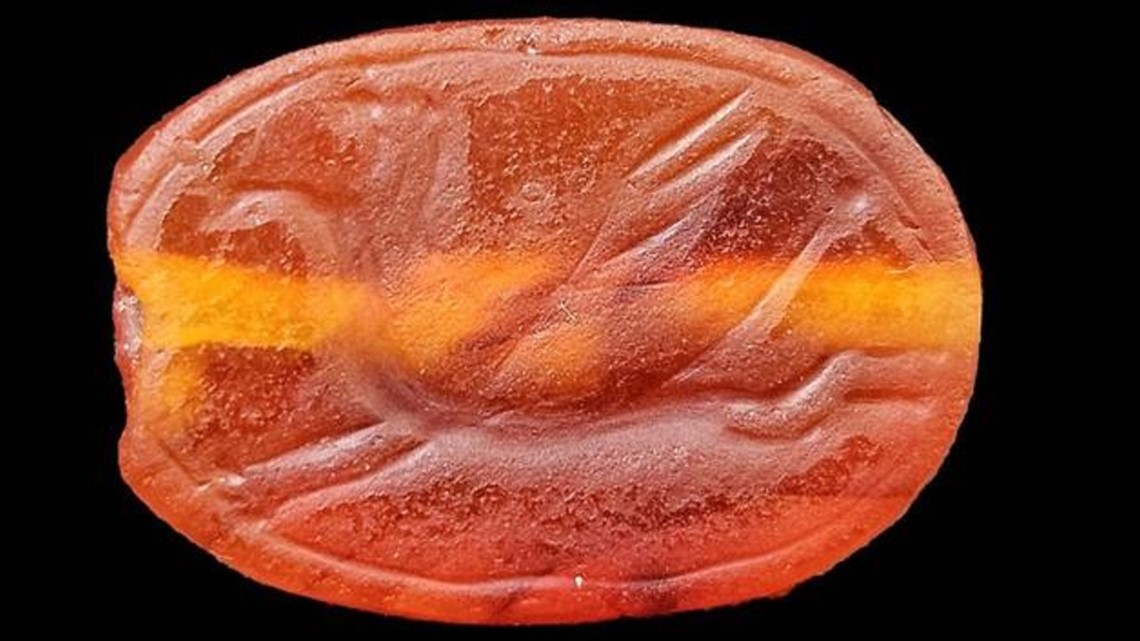ISRAEL, — A hiker in Israel discovered a centuries-old amulet in a nature reserve, the Israel Antiquities Authority announced Monday.
The hiker, identified by the authority as 45-year-old Israel Defense Forces reservist Erez Avrahamov, found the amulet in the Tabor Stream Nature Reserve in Lower Galilee. Avrahamov said he decided to hike in the area because he had some time off from reserve service and wanted to take advantage of sunny weather.
"While walking, I saw something shiny on the ground, and at first I thought it was a bead or an orange stone," Avrahamov said in a news release shared by the Israel Antiquities Authority. "When I picked it up, I noticed it was engraved like a scarab or beetle."
Avrahamov then called the antiquities authority to report the "amazing find." He connected with Nir Distelfeld, an antiquities robbery prevention unit inspector at the agency, who told him to look at the flat side of the scarab and see if it was engraved. Avrahamov said that he could see a figure or image on the back of the item.


Distelfeld said that he knew immediately that Avrahamov "had found something special."
Othmar Keel, a professor emeritus at Switzerland's University of Fribourg, said the stone was made of a semiprecious stone called carnelian. The carving depicts "either a mythical griffin creature or a galloping winged horse," and similar pieces have been dated to the 8th century B.C. According to the Israel Antiquities Authority, the scarab is a type of seal used widely throughout the ancient world and were made from a wide variety of stones.


Distelfeld said that the scarab was found at the foot of Tel Rekhesh, a Biblical mound and archaeological site. Itzik Paz, an Israel Antiquities Authority archaeologist who has conducted excavations at the site, the scarab is "one of the most important finds" seen there.
At the time the scarab was made, a large fortress believed to have been under Assyrian control would have stood on the site, Paz said. That means it's possible that the scarab "testifies to the presence of Assyrian (or possibly Babylonian) administration at the site," according to Paz, and may confirm the occupants of the fortress.


